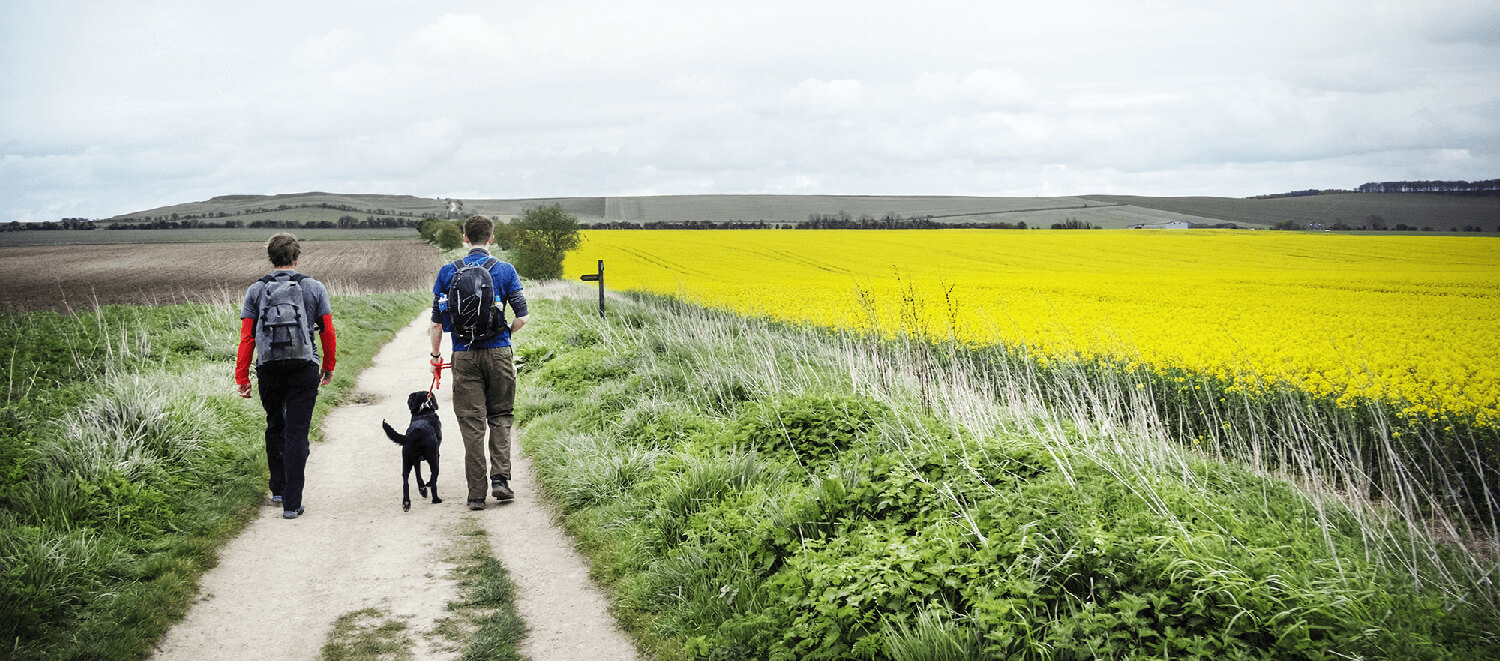As the saying goes ‘there’s no such thing as bad weather, just the wrong clothing! This is especially true when walking during the colder and wetter Autumn and Winter months. The South Downs Way passes through areas of woodland and by stunning coastal views, many of which are best seen during the latter months of the year; with the leaves either changing colour or having dropped off the trees providing a clearer view of the area.
Items we advise packing for a long walk –
1 – a lightweight rucksack
2 – packable waterproof jacket & waterproof over trousers
3 – a torch if walking on dark winter days
4 – map
5 – high-calorie snack bars
6 – flask with a warm drink
7 – mobile phone
8 – gloves and hats on very cold days
Experienced walkers should know that a sunny walk can suddenly turn into a cold, wet one and automatically have the above packed just in case. It’s always better to be prepared and not use something rather than be in desperate need of a rain mac in a sudden downpour and not have one available!
The key to a comfortable and safe walk in more adverse weather conditions is layering. Quite simply, the more layers you wear, the warmer you’ll be. You can wear as many layers as you like, but we tend to think of them as in 3 parts – base layers, mid-layers and outer layers. Air gets trapped in between each layer which then acts as insulation and keeps you warm.
The base layer goes against your skin and is usually made from something stretchy and figure-hugging yet also breathable. T-shirts are not a good base layer as they are more likely to retain moisture and make you cold. We tend to stick with a wool base layer as they are soft and comfortable and provide good warmth. Wool is also very good at wicking moisture away from your body, again helping you keep warm.
Exactly as it says, a mid-layer goes over the top of your base layer and underneath the outer layer! A breathable fleece or softshell jacket is an excellent choice. On slightly warmer days or a dry day where you’ve heated up through exertion, you can also wear these as your outer layer.
The outer layer is where you get what you pay for and the most important layer! A waterproof jacket is recommended as it’ll keep you both warm and dry. A breathable material such as GORE-TEX is perfect and ideally as lightweight as possible in case you want to take it off and pack it away. Many jackets also feature windproofing which helps prevent the warm air from being replaced by colder air. Check that your jacket is still breathable though for the most comfort.
Getting wet on a walk is the most serious threat to your wellbeing and enjoyment. Always carry a good waterproof jacket, even if you don’t need to use it, just in case. On days where you are expecting some rain, I’d advise taking a pair of waterproof overtrousers too. If you don’t like overtrousers, consider a pair of gaitors which do help provide a bit of protection to your lower legs and help stop water running into your boots.
Keeping a wool hat and thin yet warm gloves in your rucksack is also a good idea on very cold days. The hat will obviously help keep your head warm and you’d be surprised at how cold your hands can get when swinging back and forwards!
You burn more calories when walking in colder weather, so make sure you have a reasonable breakfast before setting off and have a high-calorie oaty type bar or two packed away just in case. You might not fancy a full pub lunch stop midway through your walk, so something light to keep you going is a good back up.
So, we’ve talked about keeping your body warm and fuelled, but what about the part of you that does all the hard work – your feet!
Nothing is going to cause you more discomfort during a long winter walk than having the wrong footwear on! It’s essential to keep them as warm and dry as possible so take time when choosing which ones to buy. From October onwards, our personal choice is to wear a boot as opposed to a shoe because it provides more stability for your ankles and does help to keep more of your foot warm. Make sure you find a type with good grip, especially for hill walking.
Try on lots of different types and learn what suits you best. Before embarking on a long walk, always use new footwear on smaller walks to make sure they’re comfortable enough for longer distances. Again, gaitors are worth considering when you know you might be walking through muddy puddles as they can help stop water from entering the tops of your shoes or boots and provide a bit of protection for your lower legs.
And finally, if walking alone or in a small group, always let someone know your route and roughly what time you’re expected to finish. Mobile phones don’t often work in more remote areas so having that back up is advisable.

